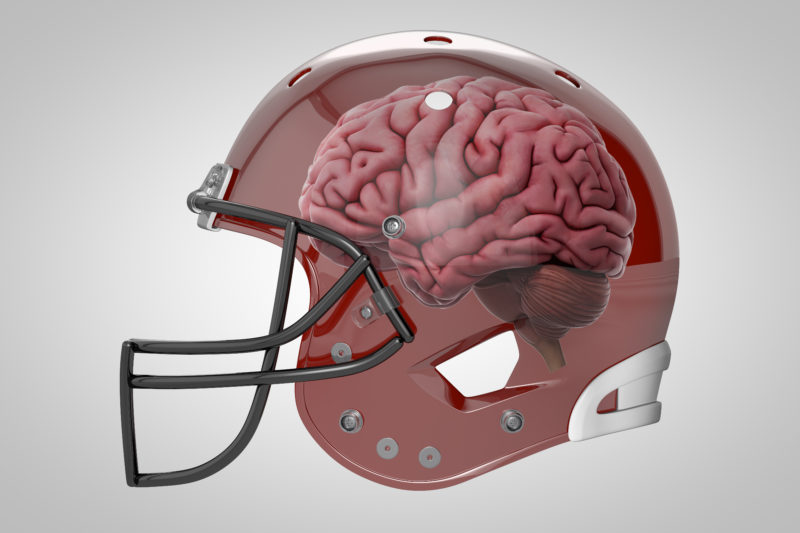By Emilee White
This five-part series will feature true crime stories and sports documentaries that cover some not-so-easy topics. Up first is the examination of concussions and the scary truth behind this traumatic brain injury.
xxxxx
Okay, so this story isn’t about any sports documentary in particular and won’t be a typical “true crime” story, but there are documentaries that discuss this difficult topic. Before we get into that, here is some information on concussions, how common they are, and how bad they can be.
The Centers for Disease Control and Prevention (CDC) defines concussions as a type of traumatic brain injury (TBI) in which the head and brain move rapidly back and forth. This sort of movement can be caused by many different factors, like car crashes and tackling someone, which is why concussions are especially common in sports, specifically football.
A 2020 study by the Henry Ford Health System’s Sports Medicine Research team on high school athletes found that of the 357 athletes between the ages of 14 and 18 who suffered a concussion between 2013 and 2016, 27.7 percent were related to football. Hockey came in a close second at 21.8 percent of reported concussions, followed by soccer’s 17 percent. These sports are all considered physical contact sports — soccer involves less tackling than football and hockey — and these are just stats for one high school.
In college, it was reported by NFL Injury Analytics that football was responsible for the majority of concussions with 3,417 reported between 2009 and 2014. The following year’s statistics showed a 0.79 increase in its concussion rate per 10,000 athlete-exposures, according to High School Reporting Information Online and two separate analyses from the NCAA’s Injury Surveillance System for seasons 2009-10 to 2013-14 and 2011-12 to 2014-15.
With stats like these, one can make an accurate assumption that concussion rates are just as bad in professional football. Vox reported between the seasons 2012 and 2019, the NFL received over 200 concussion reports each year, the highest being 281 in 2017. We hear about concussions in football all the time, and we know all these athletic departments, as well as the NFL, have concussion protocols to follow to ensure the safety of affected athletes. It was the most recent injury by Tua Tagovailoa however that brought to light how half-assed those protocols really were.
ESPN reported Tagovailoa suffered a hit to the back of the head when he and the Miami Dolphins faced the Buffalo Bills in Week 3 of the new season. Stumbling to the ground, Tagovailoa was taken off the field and evaluated for a concussion, but was cleared and returned to the game. All of this would have been fine if the Dolphins hadn’t initially listed him as “questionable to return with a head injury” and then later stated a “back injury Tagovailoa suffered earlier in the game caused him to stumble.” There was a lot of criticism about Tagovailoa returning to play so quickly after getting hurt, and it only got worse.
The following week, the Dolphins faced the Cincinnati Bengals and Tagovailoa suffered another injury, this time hitting his head on the turf. Tagovailoa was eventually charted off after staff evaluated him on the field and received a proper concussion diagnosis. Tagovailoa has since been cleared and is expected to start in the game this Sunday against the Pittsburgh Steelers, and the unaffiliated neurotrauma consultant involved in clearing him was fired due to making “several mistakes”.
The physical trauma concussions cause can be life-threatening and life-altering. So obviously, from the outside, concussions are bad. But on the inside, concussions are much worse. On the inside, concussions are literally changing the chemistry of the brain.
The Mayo Clinic lists Chronic traumatic encephalopathy, or CTE, as brain degeneration “likely” caused by repeated head traumas, like concussions. While rare, CTE has been found in the brains of football players and other contact sports athletes, but research is still being done on the rare disease. Due to the little research we currently have, there is no cure for CTE. But why is there little known about CTE? Because a CTE diagnosis can only be made during an autopsy.
That’s correct. Even high-risk people that have had repeated exposure to head injuries can only be suspected of having CTE because a diagnosis “requires evidence of degeneration of brain tissue and deposits of tau and other proteins in the brain” that’s only visible post-mortem, as stated by the Mayo Clinic. Signs and symptoms of CTE are believed to begin showing a few years or decades after head traumas and can include cognitive, emotional, and physical problems and behaviors. Additionally, it was reported that a 2009 analysis found the average age for someone with CTE is 51 years old.
CTE has only recently been discussed because initially, many people rejected the idea there could be such a disease. In 2012, Dr. Bennet Omalu first discovered CTE in professional football players after he successfully found evidence in the living brain of Fred McNeill, who has since passed away in 2015. It was when Aaron Hernandez was diagnosed with CTE following his suicide that researchers found the disease can come with another type of deadly cost.
The former New England Patriot tight end played for only three seasons when he was arrested, charged, and convicted of first-degree murder, but the CTE damage to his brain was so severe that it mimicked that of other players’ brains in their 60s, and Hernandez took his life in 2017. But we’ll get into that story later.
It’s been speculated that Hernandez’s diagnosis could have affected the way he behaved and subsequently how he acted leading up to his crime. This has led researchers to believe that CTE can cause violent outbursts like Hernandez’s in others who are suspected of having it or who are in high-risk situations.
So, with a rare and deadly disease like CTE, and the life-threatening or life-altering consequences of TBIs, concussions aren’t taken seriously enough and we are starting to see it on the football field. A documentary to watch is Concussed: The American Dream. It covers head injuries and CTE in sports like football, boxing, and mixed martial arts, and the effect CTE can have on people who have it and their loved ones.
Photo Credit: skizer




